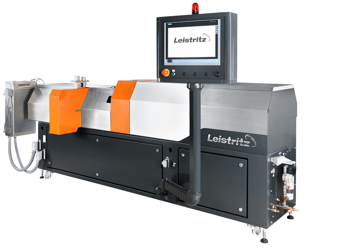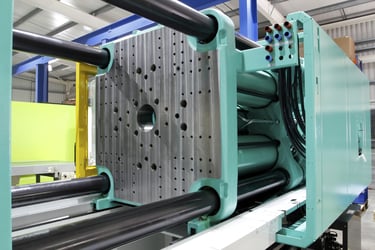During customer visits, I always clarify which resins are being used on the machines we will be purging. It is critical that the grade of purging compound is compatible with the processing resins. Otherwise, contamination and residue issues are likely. Many times when we review purging needs with a prospective client, the client may tell us something like "we need purging for clear resins", or "we are looking for a purge to remove carbon and compatible with PVC resins." These may sound like equally weighted factors, but in reality, contamination and residue are two different issues. The two requirements are cleanliness, and ease of displacement from the system with the next resin. It is worth remembering, that transparent and heat-sensitive resins such as polycarbonate entail both concerns: removing black specks so that the part comes out 100% carbon-free, and that the purging compound used to remove the black specks comes out of the machine efficiently, without taking up so much time and quantity of the next resin. Purging the resin from the previous run or removing carbon is a necessity completely separate from ensuring there’s no struggle with purge residue when adding the resin for the next run.
In the purging market, carbon removal is considered one of the most difficult applications, and in fact, requires more powerful purges such as our EX Grade. It doesn't matter if it's just to remove a few black specks or if the problem is worse and you struggle with pieces of degraded resin breaking off and ruining your yield. High-powered mechanical purges (that work with a scrubbing action) can carry a higher viscosity and suitable scrubbing ingredients that contribute to cleanliness, but this same viscosity is a point to consider when we see that the next resin (the one that has the role of displacing the purging compound from the machine) is sensitive to the purging compound's residue. Chemical purges (which offer cleaning by a reaction of ingredients) can also leave residue, either because of their set of ingredients, because of the by-products created by the reaction, or because of the melt flow of the base resin.
Residue-sensitive resins can be clear resins such as polycarbonate, acrylic (PMMA), clear styrene, or can be softer resins such as flexible PVC, or an olefin such as high melt flow polypropylene. When purging before starting production with these resins, one can struggle a little longer than desired trying to displace a powerful and "heavy" purging compound. This is the case if it was necessary to use a high-power purging compound to remove carbon or an engineering resin. It is understandable that removing difficult deposits requires an "aggressive" formula, while that same "aggressiveness" (whether mechanical or chemical) is what causes us some residue problems. It is right there that you can clearly see that they are two different needs.
Other variations may be the following...1) If they intend to pull the screw for maintenance, there is no concern of struggling with the residue, no matter how sensitive the next resin is. 2) In case there is no carbon to remove, and only polymer, a less aggressive or general-purpose purging compound could be used and can help facilitate its own displacement with the next resin. 3) If the previous resin you are purging is sensitive to residue, but the next resin is not sensitive to residue, you can use a high-power purging compound without worrying about residue, provided the viscosity of the next polymer is sufficient to remove the purging compound from the machine.
In cases where two resins of very different melt flows are handled, there is more than one option. One example: a glass filled PA resin going to a polypropylene with a MFI of 40. In this case, you could either 1.) use a strong purging grade for the polyamide and hope not to struggle too much getting it out of the machine with the PP, 2.) use a gentler purging compound compatible with the PP of MFI 40 and hope not to consume too much purging compound to successfully purge the polyamide, or 3.) you could use a combination of both purging compounds, where you start the cleaning of the PA with a strong purging compound, then immediately run a “chaser” purging compound that makes it easier to a) displace the previous strong compound and b) get it out of the machine more easily when you start running the next PP resin of MFI 40. Finally, one of the best solutions is to use a well-engineered, high-quality purging compound. One of the advantages of high-quality purging compounds is that they offer the best of both worlds: high cleaning performance, and low residue.
Having defined the needs for proper purging, we can avoid misunderstandings, and we see that the need for removing carbon, and the need for low residue, are very different. When you are looking for a purging process that is "compatible" with a certain resin, share with us the necessary details (previous resin, next resin, presence of carbon, MFR, etc.) and together we will confirm the best option for your purging program.
Learn more about how to reduce production downtime and protect your profits with a purging compound.

Celebrating his 24th year with Asaclean - Asahi Kasei Plastics North America, Lenny Gutierrez is a renowned purging expert who played a pivotal role in the company's expansion into Mexico in 2009. Currently, he excels as a Technical Sales Representative for Ohio, Illinois, and Missouri, combining his extensive industry knowledge with a strategic approach to drive sales and client relations. Lenny is also a prominent presenter at tradeshows and conferences, representing Asaclean with his expertise and professionalism.







Comments